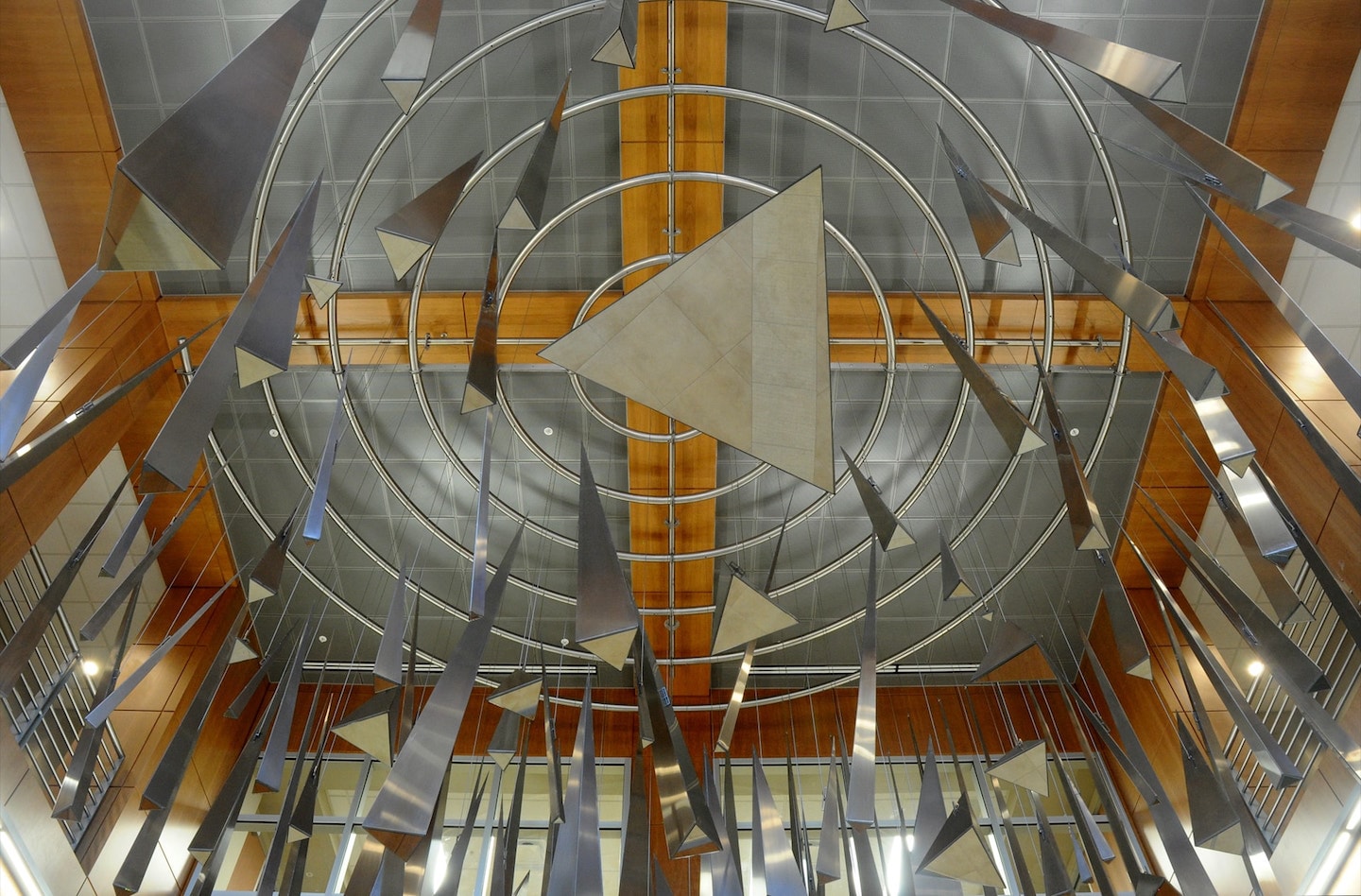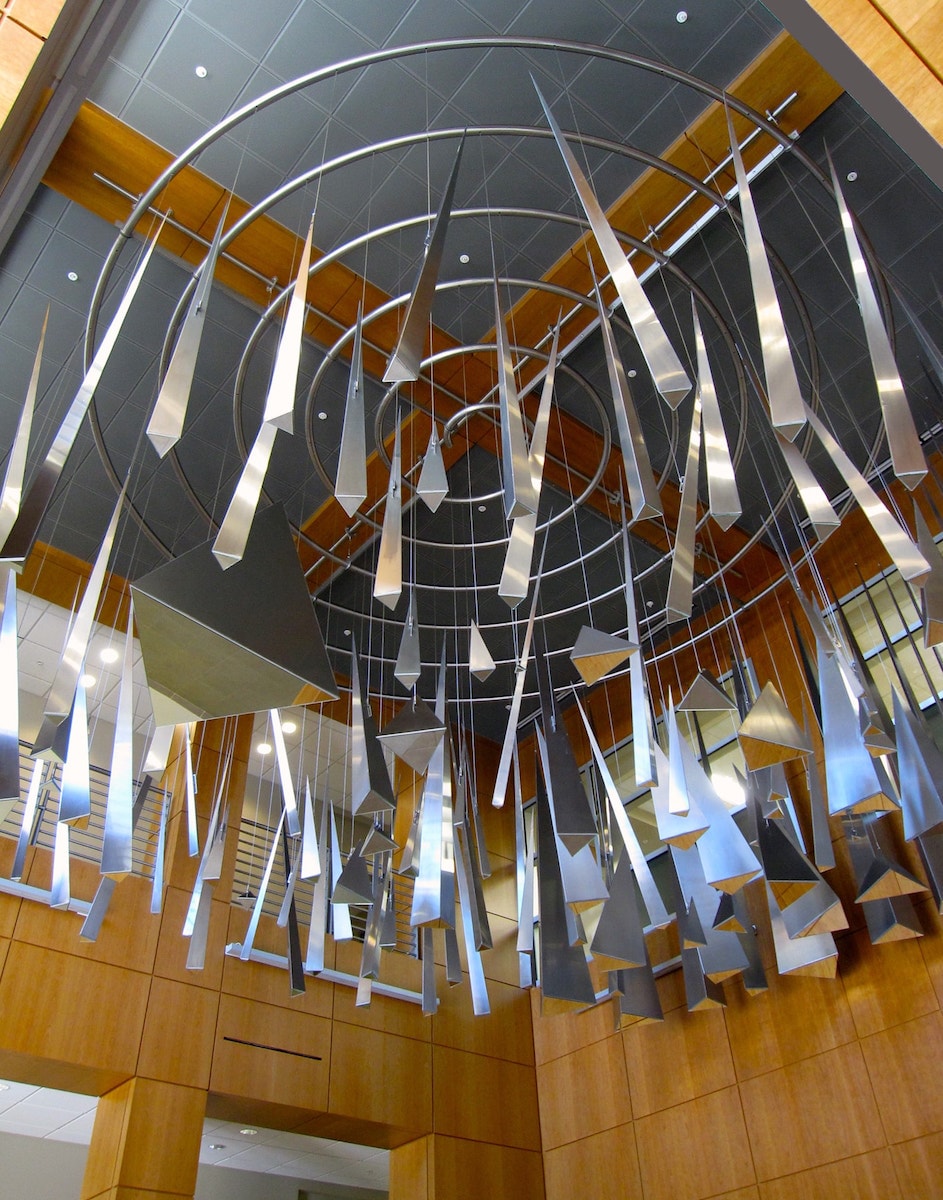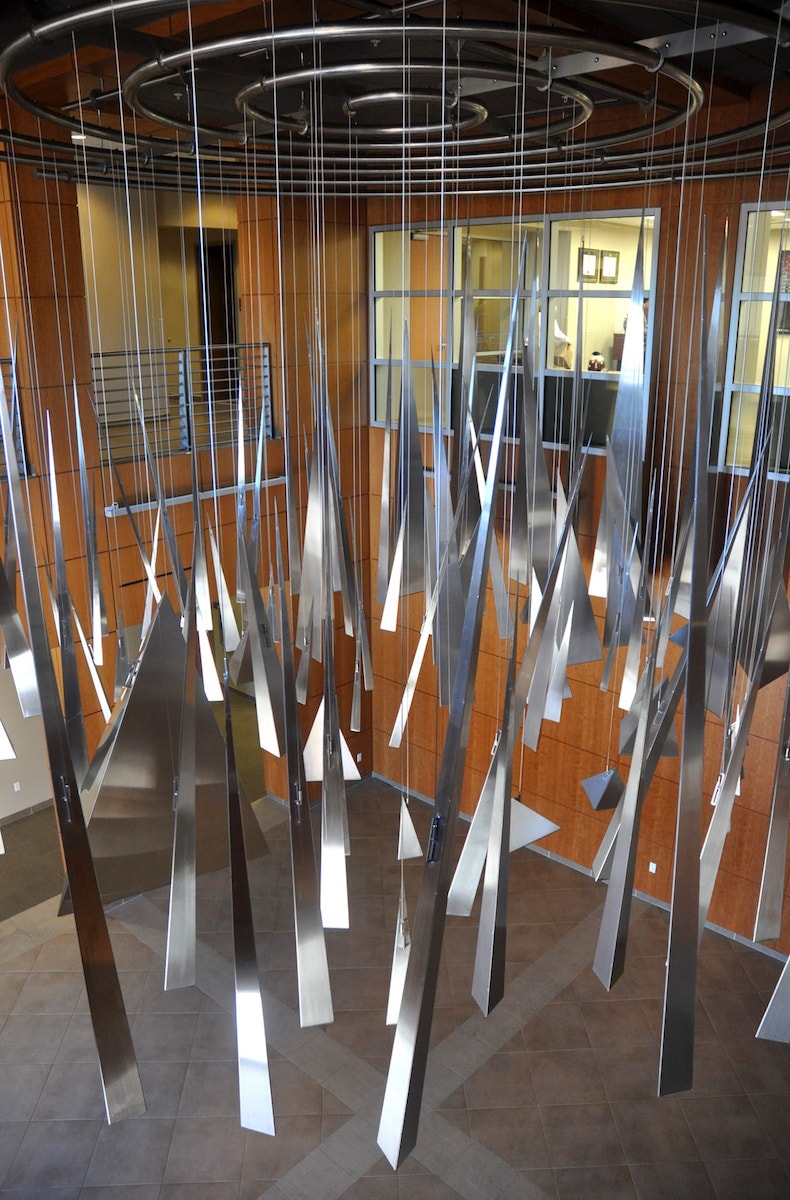Axiom
The University of Central Florida
Physical Sciences Building
Orlando, FL
2010
Commissioned by:
Florida Art in State Buildings Program
Dimensions:
26’ 10-3/16” x 26’ 4-5/6” (11.03 m x 9.16 m)
Materials:
Stainless steel, suspension cable and fittings, hardware
Within the grand volume of the UCF Physical Sciences Building Lobby/Atrium, Axiom’s 118 unique, faceted forms are suspended high above viewers’ reach. Each scaled to represent its unique constituent of the periodic table, the elements are delicate and precise, stainless steel tetrahedrons with mirrored surfaces reflecting the commons below.
Viewers entering the Lobby/Atrium look up at a wondrous collection of elements in perpetual motion. Infinitely observant, the mirrors of each tetrahedron capture the viewer’s image and amplify a small fragment of the entire space. The work is continually active, reflecting the energy of the present. Never visually static, it tracks and collect its surroundings from all directions.
Each element is suspended at a precise angle, capable of rotation and always in flux, creating a lively dialogue between the artwork and the UCF community moving through the space below.
Axiom transforms the Physical Sciences Lobby/Atrium into an optical wonder: reflecting its context, revealing both finite elements and an infinity of perspectives.
Project Notes
The tetrahedrons’ dimensions and configurations were derived from information distinct to each element in the periodic table. The atomic number is represented by the vertical dimension of the tetrahedron, measured from the center of the pyramid’s base. This creates an accurate proportional relationship between all the elements. The base dimension is measured with reference to the valence electron number. This is represented in units of length measured from the center of the base to the three base corners.
Just as an atom’s electronegativity influences the element’s ability to attract electrons from other atoms, each symbolic tetrahedron’s angle of suspension is determined by its relative electronegativity on a scale of from 0 to 4 (amplified by a factor of five to render the differences more evident).
The elements are suspended in a spiral determined by the chronological order in which each was discovered, beginning with primordial copper, gold, lead, silver and iron at the work’s center, spiraling outward to the most recently observed elements.
Provisions have been made for future additions of tetrahedron elements to the work, as advancements in science are made.





